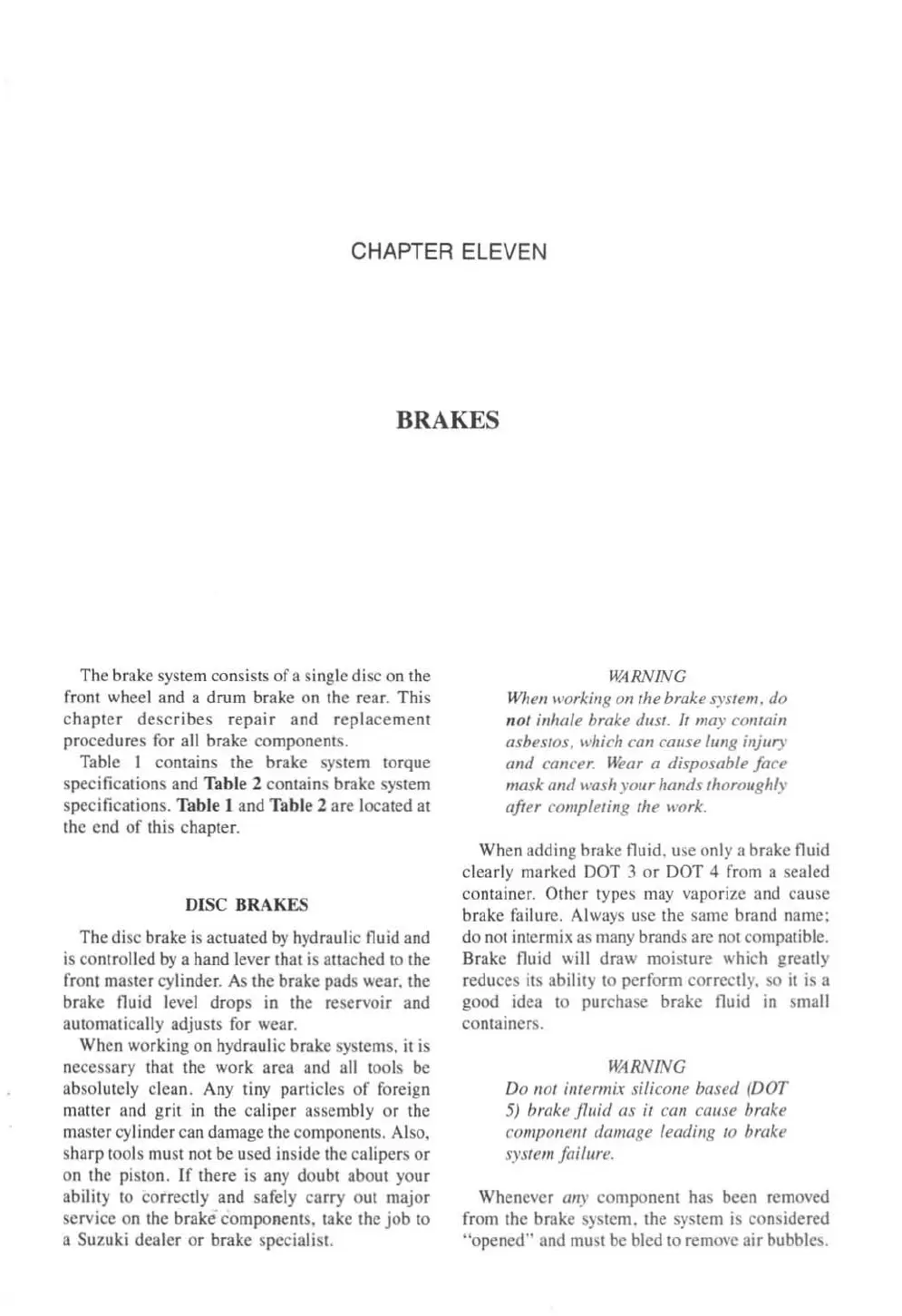CHAPTER ELEVEN
BRAKES
The brake
sys
tem consists
ora
s
in
gle disc on the
front wheel and a
drum
brake on the rea
r.
This
chapler describes
repair
a
nd
replacement
procedures for all brake components.
Table I co
ma
ins the brake system torque
specifica
ti
ons
and
Tabl
e 2 contains brake system
specifications.
Table
I and Table 2 3rc located
al
the end
of
this chapter.
DISC BRAKES
The disc brake is actuated
by
hydraulic fluid and
is
co
m ro
ll
ed
by
a hand lever that is attached to the
fronl master
cy
linder. As the brake pads wear. the
brake fluid
le
ve
l drops
in
the reservoir and
aUlOmalically adjusts for wear.
When working on hydraulic brake syst
ems.
it is
necessary that the work area and all tools
be
absolutely clean. Any tiny particles of
fo
reign
matter
lind grit
in
the
ca
liper assembly
or
the
master cylinder can damage the
co
mponents. Also.
s
harp
tools
mu
st not be used
in
s
id
e the calipers or
on the
pi
ston. If there
is
any doubt about your
ability to correctly and safely
ca
rry
o
ut
major
servi
ce
on the brake components. take the
job
to
a Suzuki
dea
l
er
or
brake specialist.
(Y,.1RNING
IY1
ltllll"orkilig
011
the brake system. do
1I0t
inhale brake dllst.
It
may contain
asbestos.
which can calise /lmg illjllry
alld ca
ll
cer.
n
~ar
a disposable face
mask and wash
)"O
llr hallds thorollghly
after comp/etillS the work.
When adding brake
nuid.
u~e
only a brake
nuid
clearly marked DOT 3
or
DOT 4 from a sealed
container.
Other
types may vaporize and cause
brake failure. Always use the same brand name:
do not intermix as many brands are not compatible.
Brake
nuid
will
draw
moiSlUre which greatly
reduces its ability
10
perform correctly.
so
it
is
a
good idea to purchase brake
nuid
in
small
co
nt
ainers.
m1RNING
Do
//Ot
illfermix silicone based (
DCfT
5)
brake jllli(/ as
it
can calise
bmke
componelll (/amage leadins
10
brake
sySlem failure.
Whenever any component has been removed
from the brake system. the system
is
considered
"opened'" and must be bled to remove
air
bubble
s.

